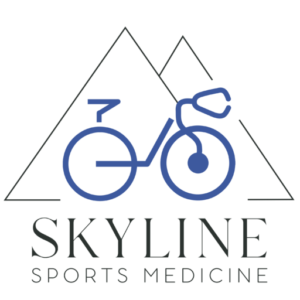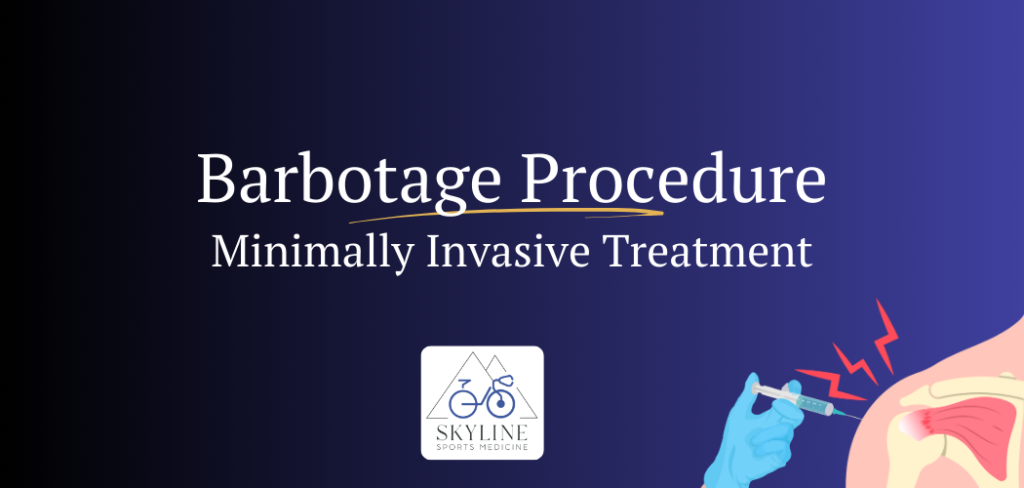What is the Barbotage Procedure?
The barbotage procedure is a minimally invasive treatment for removing calcium deposits in tendons, or calcific tendonitis. This is typically performed under ultrasound guidance. Using ultrasound and local anesthesia, a needle is accurately guided to break up the calcium deposits in the affected tendon(s).
While barbotage shoulder procedure requires special equipment and skill, it is a very safe and effective technique with few complications.
For the barbotage procedure, no special preparation is needed. The procedure takes approximately 30 minutes and can be done at your doctor’s office. Wear clothes that make it easy to expose your shoulder.
Keep reading to learn more about:
- The barbotage procedure
- Associated costs
- Recovery time
Book a Consultation with Dr. Svetlana Dani, MD
The Best Sports Medicine Physician in San Jose
Dr. Dani can help you get back to peak performance.
If you:
- Are Suffering From a Sports Injury
- Need Assessment and Advice on your performance
- Want Cutting-Edge Treatment & Rehabilitation
We Can Help
Indications & Conditions Treated
The main reason to use Barbotage is for the treatment of calcific tendonitis. Patients often have a severe and ongoing shoulder pain that hasn’t improved with painkillers or physical therapy.
The barbotage procedure is mainly used to treat calcific tendonitis to remove calcium deposits in tendons, helping to relieve pain and improve function.
Barbotage for Calcific Tendonitis
Calcific tendinitis (or calcific tendinopathy) occurs when calcium deposits form in the tendons. It is most common in the shoulders, especially in the rotator cuff, but can also affect the elbows, wrists, hands, hips, knees, or feet.
Calcific tendonitis is a common cause of shoulder pain. This condition often affects women, making up 70% of cases, and it is most common in people 40-60 years of age.
While this can be conservatively managed with rest, physical therapy, and non-steroidal anti-inflammatory drugs, newer procedures such as the barbotage procedure have been shown to aid in symptom relief.
Barbotage is performed to remove these calcium deposits from your tendon. This procedure is done with local anesthesia (a local numbing injection) and usually also includes an injection of corticosteroids. This helps to reduce swelling and relieve pain. Patients typically recover fast and feel much less pain, often avoiding the need for a traditional open surgery.
Other treatment options for calcific tendonitis include the following:
- Extracorporeal Shock Wave Therapy (ECSW)
- Shoulder Arthroscopy
- Physical Therapy
Cost of the Procedure
The barbotage procedure cost may vary depending on insurance coverage or if you are paying out of pocket. For an exact quote or to schedule a consultation, please contact us directly.

How is it Performed?
- You will be positioned comfortably, and the skin over the treatment area will be marked and cleansed.
- Your doctor will use a local anesthetic injection to numb the area around your affected tendon.
- Then, your doctor will apply a cool gel to the area and look at your joint with an ultrasound to find the areas with calcium deposits.
- A needle is inserted into the tendon where the calcium crystals are identified.
- The doctor then uses a back-and-forth motion with the needle to break up the calcium deposits.
- A saline solution may be injected to flush out the broken calcium particles, which are then aspirated (sucked out).
- Your doctor may then inject corticosteroids to help relieve pain and decrease inflammation.
- The needle is removed, and a small bandage is applied to the insertion site.
Is Barbotage Procedure Painful?
Any procedure involving the use of a needle injected into a joint space may be painful. However, local anesthesia is injected at the start to minimize pain during the procedure. You might feel pain once the numbing wears off. Discomfort can last a few days as your body reabsorbs the calcium.
You can use the following measures to reduce pain after needle barbotage:
- Use acetaminophen for pain relief; avoid anti-inflammatory medications (NSAIDs like ibuprofen or naproxen), as these may interfere with the body’s process of break up and resorption of calcium.
- Elevate and ice the treated area to reduce swelling.
- Get in touch with your doctor in case of worsening symptoms.

Recovery Following Barbotage
After the barbotage bone spur procedure, make sure that you take proper rest and avoid any activities that could put strain on your tendon for two weeks, such as:
- Heavy lifting
- Strenuous activity, including running, contact sports, or any swinging movements of the arm
Keep the dressing clean and dry for the first 24 hours. Please follow the aftercare instructions provided to you at your procedure.
Practice gentle movements and exercises that help to restore your mobility such as
- Gentle pendular movements
- Gentle stretches
As days progress and pain decreases, you can slowly start practicing active range-of-motion exercises such as
- Shoulder shrugs
- Elbow raises
- Deeper stretches that do not cause pain
Note: Stop any exercise if you feel any pain or discomfort. Talk to your doctor before starting any exercise program.
Can I drive afterwards?
After the barbotage procedure, it is recommended that you do NOT drive right away as it is best to limit shoulder movement immediately after the procedure. You can drive the next day if you feel okay. However, it’s recommended to rest your shoulder for at least 3-5 days before beginning any activities.

Barbotage Side Effects
Studies indicate that barbotage is a safe procedure. The complications that may occur include the following:
- Bruising
- Pain
- Blood clots
- Tendon rupture
- Infection
However, aside from bruising and pain, these complications are rare.
FAQs
How long does it take to recover from barbotage?
Recovery time varies. Patients typically return to their baseline activity level about 4-6 weeks after the procedure. Make sure you take proper rest periods and use ice therapy for recovery.
When can I expect to see improvement in symptoms?
Improvement in symptoms like pain and mobility usually starts within a few weeks after barbotage as your body absorbs the broken-down calcium deposits. If a steroid is injected into your joint during the procedure, you may experience pain relief within days.



